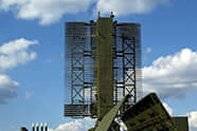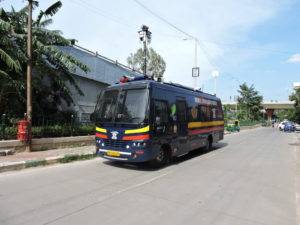A Comprehensive Guide on Radar Systems
The inception of Radar technology dates back to the late 1880s, yet it wasn’t until the 1920s that the true potential of this revolutionary system began to unfold. With the rise of airplanes in military operations, the necessity for detecting aircraft from considerable distances became imperative for defense forces. The United States Naval Research Laboratory showcased the first rudimentary Radar system in 1922, marking the initial steps towards a transformative era in surveillance and detection capabilities.
By the early 1930s, major global powers including the United States, the United Kingdom, France, Germany, the Soviet Union, Italy, Japan, and the Netherlands were actively engaged in the development of Radar systems for military applications. During World War II, these systems witnessed critical utilization and underwent significant technological advancements. The following decades, especially the 1950s and 1960s, saw significant advancements in radar technology, with many nations adopting it to modernize their military forces.
Today, Radar systems have transcended their military origins to become an indispensable tool across diverse sectors and applications. From enhancing military surveillance capabilities, meteorology, to advanced automotive and industrial safety, Radar technology’s influence permeates various facets of modern life.
In this article, we look into the rich history, innovative applications, and evolving landscape of Radar systems, highlighting their significance and ever-expanding potential.
What is a Radar System?
RADAR, the acronym for Radio Detection and Ranging System, is an electromagnetic sensor that is used for detecting, tracking, locating, and identifying various objects at considerable distances. It functions by emitting electromagnetic energy towards objects, often called targets, and then analyzing the energy that is reflected from them.
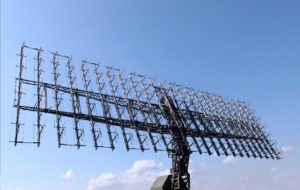
Besides tracking the velocity and distance of the object, Radar can also determine the shape and size of the target. Radar systems, unlike optical and infrared sensing devices, can detect distant objects even in adverse weather conditions while precisely determining their range, speed, and direction of movement.
Radar devices operate across a diverse spectrum of frequencies, each tailored to specific applications due to their unique physical properties. For instance, air surveillance and long-range detection and penetration applications fall within lower frequencies (30 to 300MHz). Weather Radar, operating in the C-band (4 to 8 GHz), is tailored for high resolution and penetration. Similarly, applications demanding higher resolution and penetration capabilities often utilizes the X-band (8 to 12 GHz).
Industrial Radars use 60-64GHz frequency range, offering fine resolution but shorter ranges. Automotive systems predominantly utilize 76 to 81 GHz frequency within W Band, while modern level measurement Radars leverage 80 GHz frequency band. Each band balances range, resolution, and penetration for specialized radar needs.
The hardware and software components of radar systems differ based on the operating frequency, type (handheld, ground-based, vehicle-mounted, ship-mounted, or airborne), and intended application.
How does a Radar system work?
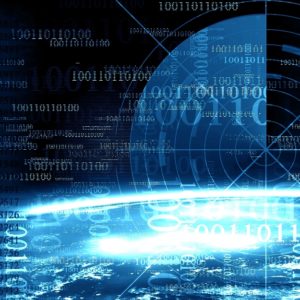
A Radar system typically comprises of a transmitter generating electromagnetic signals emitted into space through an antenna. Upon encountering an object, the signal reflects in various directions. Subsequently, the Radar antenna receives these reflected signals, which are then transmitted to the receiver and Signal Processing Engine for processing and determining the object’s geospatial characteristics.
The range/distance of the object is determined by calculating the time taken for the signal to complete a round trip from the RADAR to the target and back. Additionally, the object’s position is assessed in terms of angle, measured from the direction of the maximum amplitude of the echo signal relative to which the antenna points. Furthermore, the Doppler Effect is utilized to measure the location and velocity of moving objects.
The fundamental components of the system include:
- Transmitter: This can take the form of a power amplifier, such as a Klystron, Travelling Wave Tube, or a power oscillator like a Magnetron. The signal is initially generated using a waveform generator, amplified by a power amplifier, and transmitted into the atmosphere.
- Modulator: It toggles the transmitter on and off to generate the appropriate waveform for the transmitted pulse. It manages the timing and duration of the transmission to ensure accurate signal emission.
- Waveguides: Serving as transmission lines, waveguides facilitate the transmission of RADAR signals.
- Antenna: Antenna transmits pulses of radio waves. The antenna employed may be a parabolic reflector, planar array, or electronically steered phased array.
- Duplexer: Duplexer enables the antenna to function as both a transmitter and a receiver
- Receiver: This can be a superheterodyne receiver, or another type containing a processor to analyze and detect the signal.
- Threshold Decision: The receiver’s output is compared with a threshold to identify the presence of any object. If the output falls below the threshold, the assumption is made that it corresponds to noise.
Types of Radars
Radar systems can be categorized into different types based on their application, configuration, and scanning pattern. Some of the common types of Radar systems include:
Monostatic Radars
A monostatic Radar is a type of Radar system in which the transmitter and receiver share the same antenna or are co-located in close proximity. This configuration allows the Radar to transmit electromagnetic signals and receive echoes reflected from targets using the same antenna.
Monostatic Radars are commonly used in applications such as air traffic control, weather monitoring, surveillance, and military reconnaissance.
Bistatic Radar
Unlike monostatic Radars with transmitter and receiver at the same location, bistatic Radar Systems have the transmitter and receiver at different locations. Typically, the distance between the transmitter and receiver is equivalent to the expected distance from the estimated object.
Bistatic Radar system proves particularly advantageous in scenarios where the reflected energy from the target is minimal—such as long-range Radar and weather Radar. They are also valuable for military applications, especially for detecting targets employing stealth technology.
Monopulse Radar
This is an advanced Radar system capable of simultaneously determining the range (distance) and angle of a target from the transceiver within a single pulse. Primarily employed for target angle measurement and tracking purposes, Monopulse Radar finds extensive usage in air traffic control.
Among the various types of monopulse Radar, Conical Radar is particularly prevalent, utilizing the return signals from two distinct paths to gauge the target’s position. However, Monopulse Radar System offers advantages over conical scanning Radar systems, as it mitigates issues associated with rapid fluctuations in signal strength.
Doppler Radar System
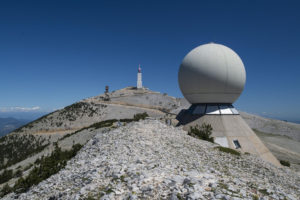
Doppler Radar system utilizes the Doppler effect to obtain the velocity data of distant objects. The system sends out a microwave signal toward the target object and then analyzes how the returned signal’s motion has changed.
By analyzing these frequency shifts, Doppler Radar can determine the velocity of the moving objects. This also helps in measuring how fast things are moving in different directions. They are used in satellite applications, aviation, meteorology, radiology, healthcare, military applications, and more.
Passive Radar
Passive Radar is a type of Radar system that detects and tracks targets by receiving and analyzing signals emitted from sources in the surrounding environment. These sources include communication signals and commercial broadcasts.
This type of Radar system does not have a dedicated transmitter. However, the system receives signals from various transmitters in the environment and measures the time difference of reception between the direct signals from the source and the signals reflected off surrounding objects.
Pulsed Radar
A Pulsed Radar system transmits powerful, high-frequency pulses at a target object, then pauses to receive the reflected signal from the object before sending another pulse. The system’s range and resolution are determined by the pulse repetition frequency, with its operation utilizing the Doppler shift method.
The concept behind Radar’s detection of moving objects via the Doppler shift relies on the differentiation between reflected signals from stationary and moving objects. Reflected signals from stationary objects remain in the same phase and are thus nullified, whereas those from moving objects undergo phase changes.
Pulsed Radar systems are categorized into two types based on this principle.
Pulse-Doppler
To avoid ambiguities in the Doppler effect, Pulse-Doppler emits pulses at a high repetition frequency. The transmitted and received signals are combined in a detector to extract the Doppler shift, and the resulting difference signal is then passed through a Doppler filter to eliminate unwanted noise signals.
Moving Target Indicator
To mitigate range ambiguities, the system emits pulses at a low repetition frequency. In an MTI RADAR configuration, the received reflected signals from the object are directed to the mixer, where they are fused with the signal from a stable local oscillator (STALO) to produce the IF signal.
Continuous Wave Radar
A Continuous Wave (CW) Radar operates by transmitting and receiving high-frequency signals continuously. It relies on the Doppler frequency shift generated by moving targets to distinguish the weaker echo signal from the stronger transmitted signal. While a basic CW Radar can detect targets and ascertain their radial velocity through the Doppler frequency shift, determining the target’s range necessitates a more complex waveform.
Various federal agencies employ CW Radar across a spectrum of applications, including target tracking, weapons fire control, and vehicle speed detection.
Application and Uses of Radar Systems
Radar has a wide range of applications across different fields. Some notable applications are given below:
Military
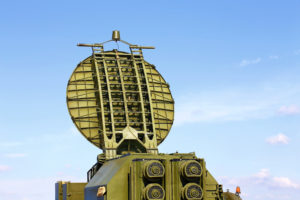
Radar finds numerous usages in military operations.
- They are utilized for target detection, recognition, and weapon control in air defense and surveillance.
- Radars track the trajectory of outgoing projectiles to guide and enhance the precision of the weapon.
- Radars detect and locate enemy Radar/Military installations, jam enemy Radar signals, and provide early warning to enhance situational awareness and strategic planning.
- Radars are integral components of Ballistic Missile Defense.
Air Traffic Control
Radars play a critical role in ensuring the safe and efficient management of air traffic within a specific airspace:
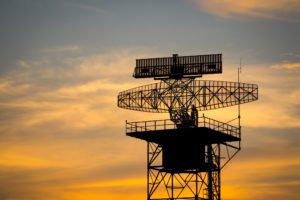
- Radars facilitate accurate aircraft detection and tracking – position, altitude, speed, and direction of aircraft in real-time, enabling air traffic controllers to maintain safe separation distances between aircraft and to provide appropriate instructions to pilots.
- Modern radar systems used in air traffic control have weather monitoring capabilities, allowing controllers to detect and track weather phenomena such as thunderstorms, fog, and precipitation and instruct Pilots accordingly.
- Radars provide surface surveillance, allowing controllers to monitor the movements of aircraft, vehicles, and personnel on the airport’s runways, taxiways, and aprons.
Space Missions
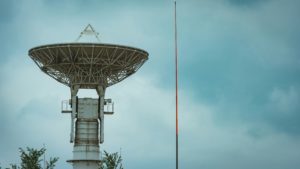
- Guide space vehicles to its target location; secure the landing and docking of spacecraft.
- Observe and study planetary systems within our solar system and beyond.
- Detect and track satellites orbiting in space.
- Monitoring the presence of meteors and their and trajectory.
Remote Sensing
- Radar technology finds applications in observing planetary positions, monitoring sea ice for navigation planning, and ensuring clear routes for ships. They are also utilized to detect atmospheric weather conditions.
- Radars aid in efficient terrain mapping and creating topography models.
- Aids in natural disaster monitoring and management.
- Facilitates oceanography and maritime surveillance.
Smart City Application
- Radar Technology aids traffic management by detecting congestion and optimizing signal timings.
- Enhances pedestrian safety through monitoring crosswalks and alerting drivers to potential hazards.
- Assists in waste management by monitoring fill levels in bins, optimizing collection routes, and reducing operational costs.
Navigation
Aircraft: In aviation, aircraft often feature radar devices, such as Ground surveillance radar and terrain avoidance radar that serve various functions such as detecting nearby aircraft or obstacles, providing weather updates, and delivering precise altitude measurements. These advancements enable aircraft to clear potential obstacles and ensure safe navigation.
Ships: Ships are navigated with the aid of high-resolution Radars positioned along the shores. Radars on ships play a crucial role in aiding navigation and enhancing safety during adverse weather conditions by detecting other vessels, obstacles, and landmasses even when visibility is reduced.
Mining and Geophysical applications
In the mining and geophysical exploration sectors, Radars are employed to detect minerals and other subsurface resources. This data aids in assessing the feasibility of resource extraction and in directing drilling and excavation activities.
- Radars are utilized for terrain mapping, monitoring land subsidence, detecting changes in geological structures, and identifying potential mineral.
- Ground-Penetrating Radar is also commonly used in both mining and geophysical exploration. It is utilized to detect underground structures, geological formations, ore bodies, and potential hazards such as voids or sinkholes.
Automotive Applications

Radar is a vital technology within the safety framework of modern vehicles. Automotive Radars serve as essential sensors in advanced driver-assistance systems. They are integral to functions such as adaptive cruise control, pedestrian detection, collision avoidance, blind spot detection, lane change assistance, parking assistance, auto-emergency braking and driver monitoring among others.
Industrial Applications
In industrial contexts, radar technology serves multiple functions vital to safety and efficiency.
- Radar sensors are deployed for precise level measurement in tanks and silos, ensuring accurate inventory management across industries like chemical processing and food production.
- They also contribute to safe zone monitoring, collision avoidance by detecting obstacles and personnel movement in areas with hostile environments or extreme temperatures where human presence is not viable.
- They aid asset tracking and inventory optimization in warehouses, optimizes manufacturing processes through real-time monitoring and enhances security by providing continuous surveillance of critical infrastructure.
Conclusion
Radar systems stand as a testament to the remarkable progress of human ingenuity and innovation. From their inception in the early 20th century to their widespread presence in contemporary society, Radar technology has continuously evolved to meet the ever-changing demands of modern life. Through their pivotal roles in defense, navigation, weather forecasting, and automotive safety, Radar systems have not only revolutionized how we perceive and interact with our environment but have also laid the foundation for future technological advancements.
As we look toward the future, the trajectory of Radar technology appears boundless. With emerging technologies and novel applications on the horizon, Radar systems are poised to further expand their reach and impact across diverse sectors. Whether it’s pioneering advancements in autonomous vehicles, enhancing space exploration capabilities, or revolutionizing environmental monitoring, Radar systems will continue to drive innovation, shape our technological landscape, and propel humanity toward new frontiers of discovery and possibility.

